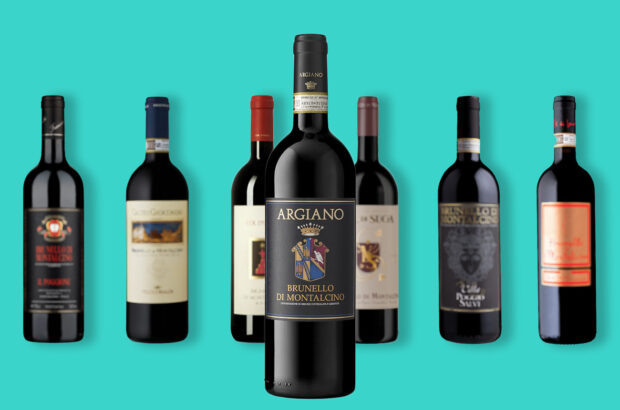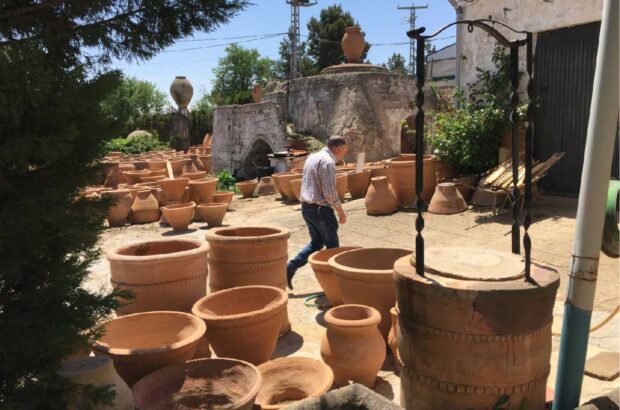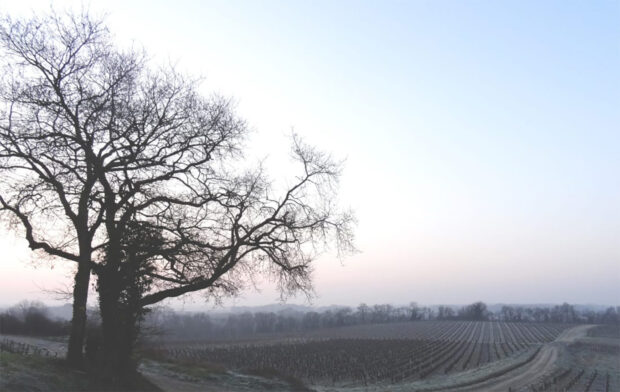- Ideal conditions for grape growing.
- Traditional varieties are in decline.
- Soundly-made wines at sensible prices.
- Remarkably high standard of winemaking.
In 1993 a military aircraft was flying low over the gentle hills that separate the ancient city of Nîmes from the marshes of the Camargue. Suddenly it dipped and slammed into the cuverie of Château de Vessière, located on one of the ridges. The winery was completely destroyed. The neighbours rallied round, offering owner Philippe Teulon the use of their facilities in order to make the wine that year. He refused, preferring to rent tanks and other equipment and vinify his wines among the ruins of his property. The renowned French bureaucracy came into play, with loss adjustors and military investigators scratching their heads for four years. By 1997 the winery had been rebuilt, its old casks replaced by gleaming stainless steel tanks.
Teulon is more than satisfied with his 1997 vintage, and he is right to be so: both whites and reds are delicious. In their grape blends they are also typical of the region, the red being composed of Syrah, Grenache, and Mourvèdre, the white of Grenache Blanc and Roussanne. These are modern wines from a region well known for viticulture in Roman times and during the middle ages. It suffered an identity crisis in the 20th century, when the Costières couldn’t decide whether it was part of the Languedoc or the Rhône – the struggle was eventually resolved in favour of the Rhône.
Stylistically, the wines are sometimes compared to those from Lirac or the Côtes du Rhône: rich, full-bodied reds, yet without the power and longevity of, say, Châteauneuf-du-Pape. The wines used to be sold as Costières du Gard, only adopting their present name in 1989. In 1996 64 per cent of production was red, 32 per cent rosé. The soils are similiar to those of the southern Rhône, consisting of flinty pebbles called gres and larger oval stones known as galets rouges. Both perform the same function, storing and reflecting daytime heat back on to the vines in the evening hours, and thus assisting the ripening process.
The region shows to its best advantage in the southern half of the 3,640 hectare vineyard area. Standing on ridges such as the one occupied by Château de Vessière, one is conscious that conditions are just about ideal for grape growing. The soil is impoverished and stoney, the slopes perfectly exposed towards the south, the marine influence from the Camargue and the Mediterranean moderates the summer heat. Harvests are relatively early so there is little risk of rain during the picking season. Should any vines be drenched by an autumn storm, the Mistral will almost certainly dry them off before rot can set in.
Like many growers in the neighbouring Languedoc, the farmers of the Costières de Nîmes have fallen in love with Syrah. Certainly the grape does exceptionally well here. One of the most consistently excellent wines of the region, the Cuvée Terre d’Argence from Château Mourgues du Grès, contains 80 per cent Syrah from old vines. The luscious reds from the recently established Château Grande Cassagne are almost as richly endowed with Syrah. At Château de Campuget, Jean Dalle is busily planting a selection of the variety from Tain l’Hermitage, and has tightened the spacing from the more typical 4,000 vines per hectare to 5,000. This is all in the service of greater fruit concentration. The traditional varieties of the region, such as Carignan and Cinsaut, are in decline and Grenache is also losing popularity. The great advantage of Syrah, and of other ‘new’ varieties such as Mourvèdre, is that the vines are trained along wires and thus can be picked by machine. The older Carignan and Grenache vines tend to be head-pruned and must be picked by hand.
Just as Syrah is transforming the reds of the Costières, so Roussanne is doing wonders for the whites. I happen to like that workhorse of the South, Grenache Blanc, but it is a variety that tends to oxidise fast, and it lacks the aromatic charm of Roussanne. So, not surprisingly, many if not most of the whites from the region contain a proportion of Roussanne. Château Belle Coste has for many years been permitted to vinify Viognier, and its Cuvée Saint Marc is 80 per cent Viognier. They enjoy this privilege, denied to their colleagues, because their Viognier vines are classified as ‘experimental’. Growers, such as Cyril Mares of Mas de Bressades, have petitioned the INAO for permission to grow Viognier, but so far without success. But, if after a good lunch or dinner, you ask a grower whether any Viognier has nonetheless managed to creep into his excellent white, you are most likely to be met with a shrug and a murmur: ‘C’est possible.’
Fifteen years ago many of the wines would have been aged in foudres (wooden casks). Now wines tend to be aged in tanks. New oak barriques are rare, and I cannot say that I have been greatly impressed by the wines I have tasted made using them. Perhaps it is because they are not inherently structured enough, or perhaps the growers have not yet mastered the techniques, but most of the barrique aged wines are distinctly woody. Mas de Bressades has been working with barriques for many years and their wines are successful, but experimental bottlings of oaked reds from Mourgues du Grès, Château Beaubois and Château de Campuget were disappointing. Even Jean Dalle couldn’t work up much enthusiasm for his oaked cuvée and hinted that it was a reluctant concession to American tastes. Château Paul Blanc has focused for many years on barrique-aged wines, but more often than not they exhibit off-aromas and stale flavours.
However, a brilliant Roussanne vinified in barriques at Mas de Bressades and released under its Cuvée Excellence label suggests that there is a real future for this style of wine in the region. The drawback is that these wines are expensive, and the primary appeal of the Costières is that it offers soundly made wines at sensible prices. Most estates produce two ranges of wine, and it is usually worth paying the premium for the more expensive bottling, as you are rewarded in terms of fruit quality and concentration. I have already mentioned the outstanding Terre d’Argence from Mourgues du Grès, and the Cuvée Elegance range from Château Beaubois is very good value. These stylish wines are dominated, not surprisingly, by Syrah in the red and Roussanne in the white. Château Belle Coste’s Cuvée Saint Marc includes the Viognier-based white, a blackcurranty red and a rich, strawberry-scented rosé.
Given the commercial imperative of keeping prices low, the general standard of winemaking in the Costières is remarkably high. There are some poorly made wines, but dilution and blandness rather than incompetence are the flaws of the region. There are now 100 private estates and 12 cooperatives, which evenly divide production between the sectors. In addition to the estates I have mentioned, very good wines can be found from châteaux de Nages and de Rozier. The cooperatives are trying hard. The Cellier des Vestiges Romains at Bouillargues, close to Nîmes, produces simple but inexpensive wines, while the dynamic Costières et Soleil cooperative grouping offers decent estate bottlings such as Domaine de Cesar. Inconsistency and a lack of concentration can sometimes mar the wines of Châteaux Lamargue, Masneuf and Roubaud, although Masneuf in particular can produce some excellent bottlings. Belle Coste and Campuget are probably the most highly regarded estates in the region, but for me the properties to watch are Mourgues du Grès (rosé as well as red), Mas de Bressades, and Grande Cassagne.
Finally, no survey of the Costières would be complete without mentioning Mas de Tourelles. While the young growers of the region are peering anxiously into the future, Hervé Durand has gone striding back into the past. Archaeologists discovered that his estate outside Beaucaire was on the site of a Roman villa and vineyard. Monsieur Durand, with scholarly assistance, has not only reconstructed a Roman winery and planted a Roman-style vineyard trained up tree branches, but he has for some years been producing a range of wines from recipes from the works of Pliny and Columella. They taste bizarre, having been aromatised with herbs or sprinkled with the Romans’ answer to sulphur dioxide – seawater. Turriculae tastes like Vin Jaune from the Jura; Mulsum is a red with powerful aromas of rosemary and thyme, Carenum is made with a quince-flavoured grape and tastes a bit like old Vouvray. No visitor to the region should fail to visit this remarkable property, but I suspect that most will agree with me that a fine Costières Syrah is something of an improvement on a goblet of Mulsum.











